Lettuce is an easy-to-grow annual vegetable. Lettuce plants need plenty of sun and thrive in soil rich in nitrogen. Many farmers monitor crops daily, checking soil moisture, pests, diseases, and general crop health. Let’s check out the top 19 steps/ways/methods to boost Lettuce yield below.
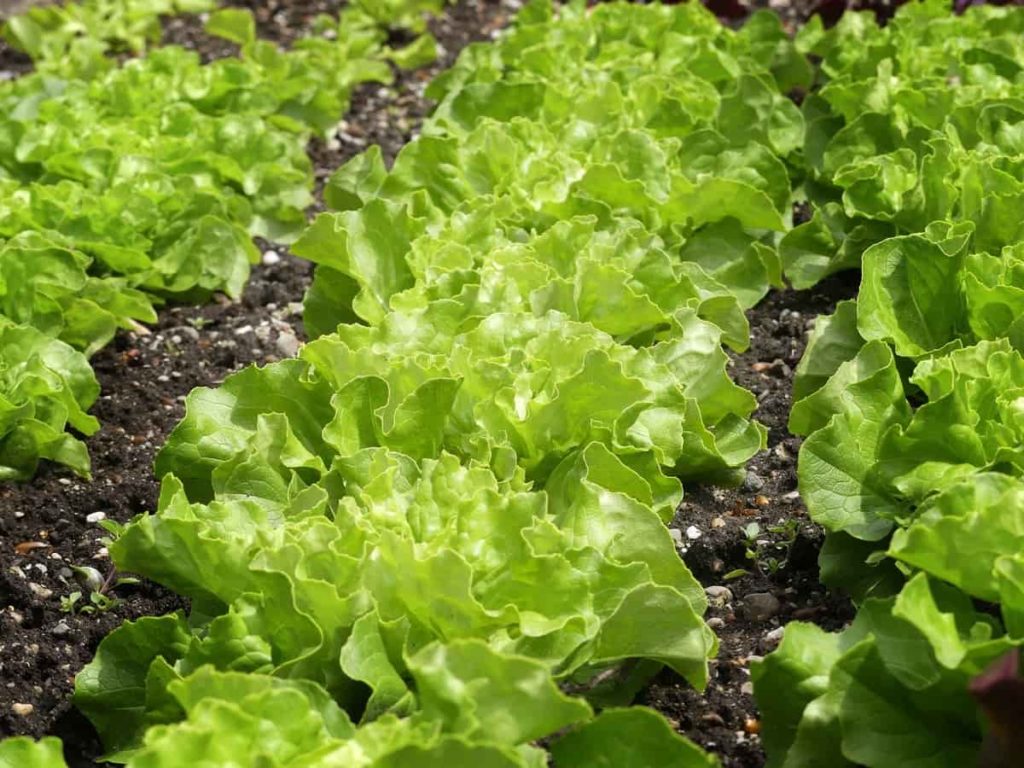
Steps/ways/methods to boost Lettuce yield
Step 1: Select high yield Lettuce varieties
- Head (or Bibb) Lettuce – Produces loose heads of soft, folded leaves.
- Iceberg Lettuce – Produces a firm head of crisp, juicy leaves.
- Leaf Lettuce – Produces loose leaves (not heads) that can be harvested when very young.
- Romaine Lettuce – Produces a long, crisp head with ribbed leaves.
Here are some cutting and regrowing Lettuce varieties that have a uniform, straight growth for the best baby leaves:
- Loose Leaf – Loose leaf Lettuce is the easiest to grow. It is also extremely fast, producing large loose heads in five to six weeks.
- Oakleaf – Oakleaf Lettuces grow as leaf Lettuce, often harvesting from the plants as they grow. If left to mature, they will grow eventually form full-sized heads. The leaves are folded like oak leaves and can be green or red, depending on the variety.
- Romaine – An essential ingredient in Caesar salads, Romaine Lettuce plants form hard, upright heads of crisp leaves.
- Butterhead – It is also known as Boston or bib, makes beautiful loose heads of soft, crisp leaves. There are heat-tolerant varieties of butterhead that can be grown in summer and cold-tolerant varieties for winter harvesting.
- Summer Crisp – Early summer crisp or Batavia-type Lettuces look like loose-leaf varieties. But as the plant matures, they form beautifully rounded heads. There are wide heat tolerant varieties that are suitable for summer growing.
- Grand Rapids varieties broad, rough, loose leaves
- Green leaf and red leaf
Step 2: Soil requirements for proper plant growth
The Lettuce plant thrives in nutrient-rich, well-drained soil. Proper field preparation is essential before sowing seeds or transplanting young plants. Experienced growers suggest that tilling the soil and adding compost or well-rotted manure usually a week before transplanting or direct seeding is helpful. In most cases, it prefers fertile soil with a pH of 6 to 6.8.
In case you missed it: How to Grow Lettuce at Home with Seeds and Without Seeds
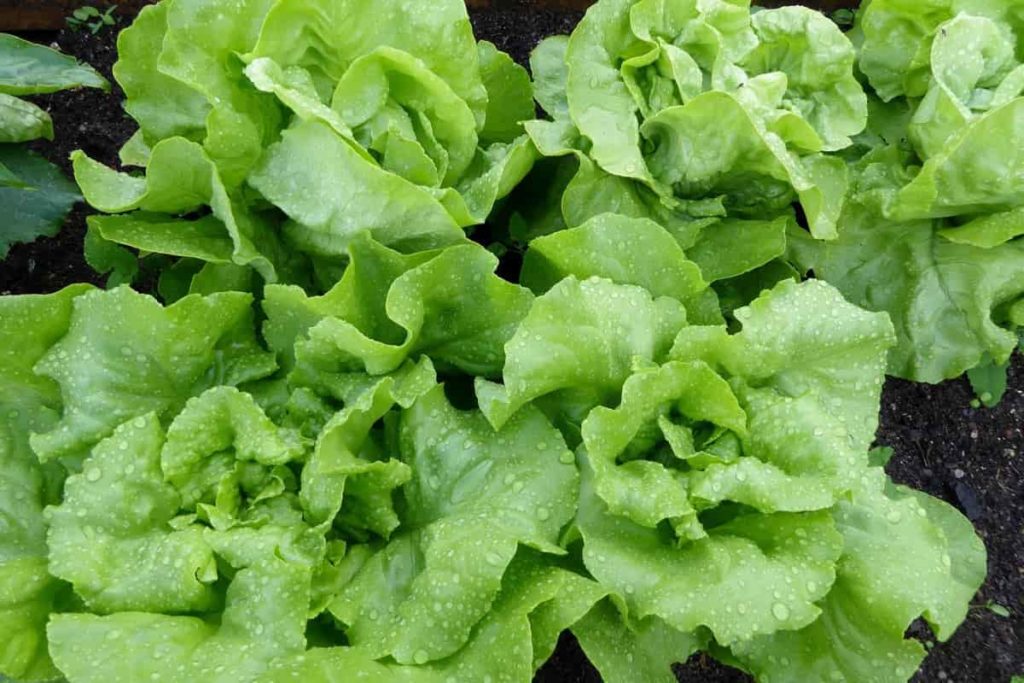
Growers should conduct a soil analysis before planting. Consultation with a local licensed agronomist is recommended to create a logical field preparation plan. An ideal potting mix should be a good mix of fertile soil and vermicomposting. If you are growing Lettuce in containers, you can mix equal parts of any natural compost like dried leaves or grass, food scraps, etc., with perlite.
Step 3: Sun requirement for growing Lettuce
Most Lettuce varieties enjoy full sun. Make sure to plant Lettuce in an area with about 6 to 8 hours of direct sunlight daily. Some Lettuce varieties can also be grown in partial shade, receiving 4 to 6 hours a day. If you are planting Lettuce when the temperature is warmer, provide some shade to protect the plant from overheating.
Step 4: Water requirements for growing healthy Lettuce
Lettuce plants have a shallow root system. They generally prefer shorter but more frequent irrigation sessions. It may need to water the Lettuce plants daily during the hot summer and maybe shade them. If we don’t water our plants regularly this season, the Lettuce plants will suffer from the heat, and bolting (the plant starts to produce seeds) can be a problem. As a result, Lettuce leaves can become bitter.
Bolting is usually irreversible, and these plants cannot be marketed. Most growers use sprinkler or drip irrigation systems. Farmers can apply a thin layer of mulch to the soil to keep the soil consistently moist. Sudden deviations in soil moisture will impair plant growth. Watering Lettuce plants in the early morning or late afternoon is highly recommended. It is important to avoid overwatering, which can result in disease and root rot. Keeping the soil moist is the primary key to growing healthy Lettuce.
Different irrigation systems include furrow irrigation, drip irrigation, and sprinkler irrigation. Frequent and light irrigation is more effective in achieving high yield and quality yield in Lettuce cultivation. After planting, crops should be irrigated at an interval of 8 to 10 days. Drip irrigation increased yield by about 30% as compared to furrow irrigation.
Step 5: Tips to grow Lettuce from a starter plant
Lettuce starter plants are widely available in spring and fall at most greenhouses and nurseries. The same rules apply, whether planting Lettuce from a store-bought starter plant or transplanting your plants indoors. Keep in mind the distance between each Lettuce plant and sun exposure depending on the plant you are planting.
Step 6: Plant time for more Lettuce yield
The main thing you want to know about growing Lettuce is when to plant it. Lettuce grows best between 60 and 70F. Primarily known as a spring and fall crop, you can start growing most varieties in early spring and early fall. Start growing your spring Lettuce after the last frost has melted and your soil has thawed.
Lettuce plant grows best in loose, cool soil with good drainage. Adding organic material, such as compost or compost, will increase drainage, provide essential nutrients and improve growing conditions for your Lettuce. If you’re having trouble growing Lettuce, consider purchasing a soil test kit. Lettuce is sensitive to low pH. Adding lime can help bring the pH down to at least 6.0.
Step 7: Fertilizing tips for growing healthy Lettuce
Lettuce does well in nutrient-rich soil. After the Lettuce plants emerge, fertilizer can be applied to maximize Lettuce leaf production. Because most Lettuce plants mature quickly, only one dose of fertilizer is usually needed. When choosing your compost, ensure it is well-balanced, with equal parts of nitrogen, potassium, and phosphate. If you select a granular fertilizer, look for a 10-10-10 or 5-5-5 mix.
In case you missed it: Earn Excellent Income Returns from Lettuce Farming
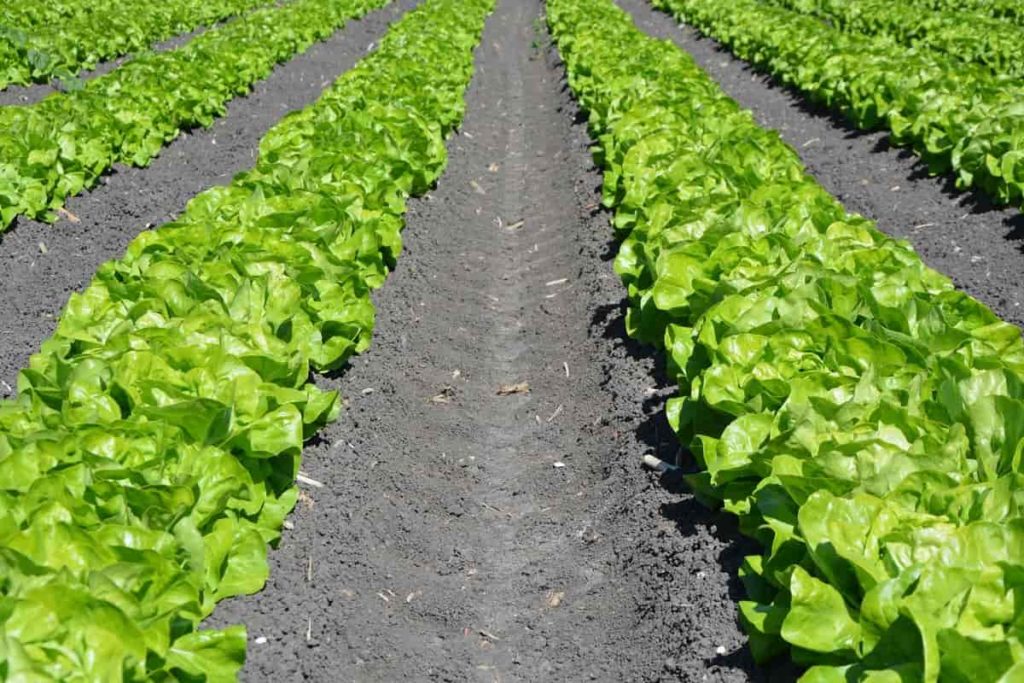
These numbers indicate the amount of nitrogen, potassium, and phosphate in the fertilizer. Apply plenty of animal manure at transplanting time. Use compost or pod tea once a week or as needed. Prepare compost tea by soaking manure in a plastic drum. After two days, the resulting mixture, tea compost, is used as a fertilizer to promote plant growth. The pod tea is prepared by steeping ipil-ipil or Madre de cacao leaves in water.
The mixture is ready after 6-10 days. At transplanting, apply 10 grams of 14-14-14/till with basal fertilizer followed by 5-10 grams urea (46-0-0)/plant 2-3 weeks later. Add compost to the soil before Lettuce planting to enrich it with organic matter. Then, following label directions, apply a high-nitrogen fertilizer about three weeks after planting. It will help promote healthy, strong leaf growth.
Step 8: Reasons for Lettuce is not growing very well and is wilting
Both insufficient soil moisture and excessively wet soil can result in poor growth and wilting. Lettuce under drought stress wilts rapidly and fails to produce new growth. Wet and wet soil causes plant roots to rot. Leaves begin to yellow and wilt, or the entire plant may stop. Planting in rich, moist soil drains well, and covering the bed with mulch helps prevent drought stress.
Give plants about 1 inch of water weekly, but avoid overwatering, which creates a waterlogged situation. Hot temperatures reduce leaf production and can cause wilting. Lettuce can also bolt or form a seed stalk if temperatures get too hot. Two fungal pathogens can cause wilting of Lettuce: Sclerotinia minor and Sclerotinia sclerotiru. Infected plants may rot or wilt in the leaves, stems, and roots. Plants grow poorly before eventually collapsing and dying.
These fungal diseases like moist soil, so planting in a well-drained bed is not a problem beforehand. Destroy infected plants immediately and keep Lettuce plants dry to minimize the spread of Lettuce drops. Chemical controls are usually not necessary in the home garden. Instead, move Lettuce to a better garden bed, plant in a raised bed, or grow in containers with good drainage.
Step 9: Space does Lettuce need to grow well
Place the plants correctly if you are growing your Lettuce in the garden. Large heads of Lettuce should be planted about 10 to 12 inches apart. Baby Lettuce can be planted about 6 to 8 inches apart. Lettuce can also be grown in any pot or container at least 4 to 6 inches deep with drainage holes. Some of these include:
- Window boxes
- Pots
- Fabric planters
- Baskets
In case you missed it: Organic Lettuce Farming, Cultivation, Growing Process
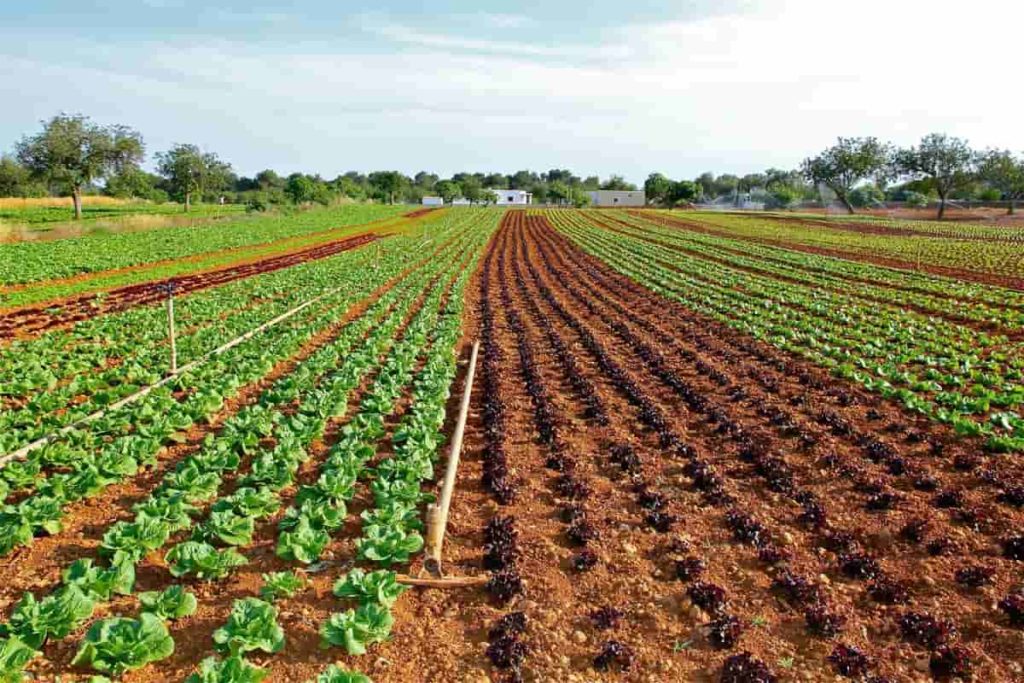
Step 10: Succession planting for increasing crop yield
If you are interested in harvesting Lettuce so that it continues to grow, you should consider succession planting. Instead of planting your Lettuce all at once, start planting in April and plant new seeds or starter Lettuce plants every 10 to 14 days to increase your harvest. To prevent bolting, stop planting at least a month before warm summer temperatures begin. You can follow the same process in late summer/early fall until the cooler fall temperatures take over.
Step 11: Seed rate to boost Lettuce plant yield
Lettuce seeds are thin and delicate – about 325 grams are required for one hectare of Lettuce cultivation. Since the seed is very thin, plant the seed in the bed. One gram of Lettuce contains about 800 seeds.
Step 12: Sow the Lettuce seeds to get more yield
- The process of growing Lettuce by sowing seeds is easy. First, prepare the potting mix. If you plant Lettuce directly in the ground, add vermicomposting to the fertile soil. Fill the containers with potting mix carefully. Next, scatter the seeds 1 inch apart and cover with a thin layer of potting mix.
- Make sure that the area where your garden is located gets enough sunlight for the seeds to germinate. And sprinkle enough water to moisten the soil. But don’t get it wet. Too much water prevents the roots from growing and spreading to their full potential.
- The Lettuce seed’s germination time will be about 7 to 10 days. During germination, ensure your plants get the right sun, and the soil is constantly moist.
- Once the seeds germinate, they will turn into small plants with 2-3 small leaves. Then, this is the right time to thin them out. Thinning means cutting back a few plants to allow the rest to grow.
Step 13: Mulching for healthy, strong leaf growth
Mulching keeps the soil moist and cool. Mulch prevents drought, wind, and hot sun from penetrating the soil by covering it. For organic Lettuce, apply a 2-3 inch layer of organic mulch such as straw, wood chips, leaves, and grass around the Lettuce, making sure to leave a little space around the plant to prevent rot.
In case you missed it: Hydroponic Lettuce Farming In Greenhouse For Beginners
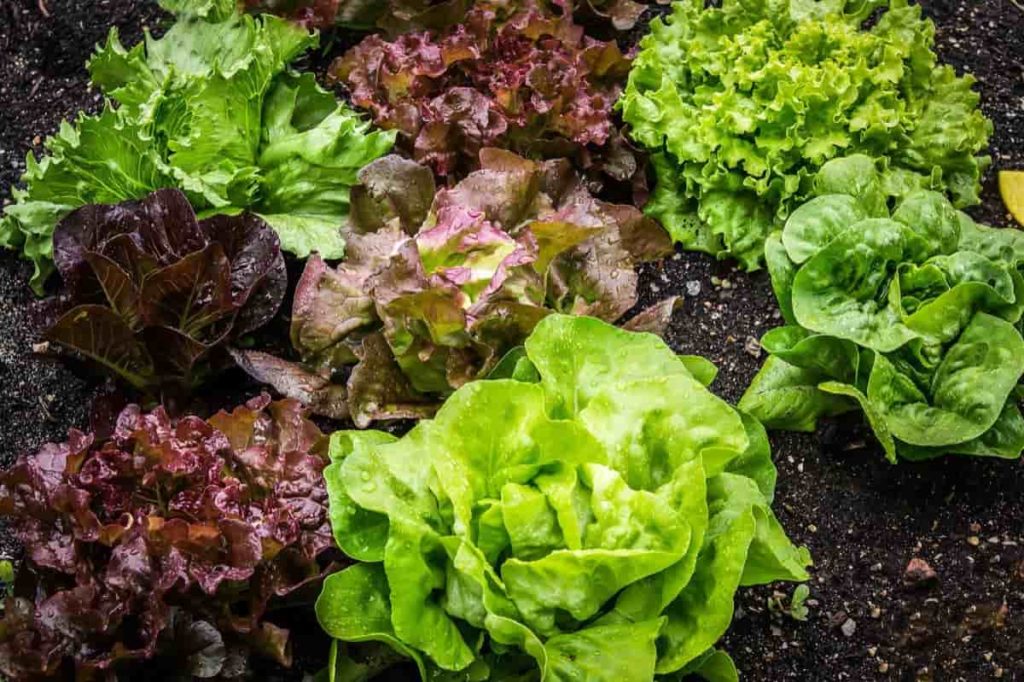
Step 14: Tips to grow Lettuce in containers
Growing Lettuce in a pot or container is an excellent option to help protect it from pests. Be sure to check the space requirements for your specific Lettuce type. In general, a six- to 12-inch container should be sufficient. Make sure it has drainage holes. Unglazed clay is an ideal container material because it will allow excess clay moisture to escape from its walls.
Step 15: Pruning for more Lettuce growth
The only pruning care Lettuce needs are the harvesting of its mature leaves. Also, trim off any broken leaves in the Lettuce plant that drag on the ground to prevent them from pests and diseases.
Step 16: Pests and diseases control for achieving high yield
It is essential to know the enemies of the crop and develop environmentally friendly methods in advance to deal with them. Consult a local licensed professional to control Lettuce plant pests and diseases properly. The most common Lettuce plant pests and diseases are listed below.
Aphids can easily destroy Lettuce patches. Sucking up nutrients and water causes the leaves to droop and wither. Aphids also spread disease and cause mold problems. You’ll find these pesky little white bugs hiding under Lettuce leaves. There is no systemic insecticide to control aphids, so the best option is to encourage natural predators like lady beetles or to apply horticultural soap or neem oil.
They are the most common enemies of leafy vegetables. Adults and nymphs feed on Lettuce plant sap and attack stems, flowers, and leaves. Slugs like to crush Lettuce plant leaves, making large holes an unmarketable product. If they are allowed to reproduce freely, they can destroy an entire Lettuce crop in a short time.
- White mold – It is also called sclerotenia, and it is a fungal disease. It affects a wide variety of plants, including Lettuce. It is identified by looking at the stems. Stems appear discolored and wilted.
- Bottom rot – It is a fungal disease that attacks mature Lettuce plants. It is caused by Rhizoctonia solani.
- Downy mildew – It is caused by Bremmia lactucae that causes yellow spots on older leaves.
The best method to control Lettuce pests and diseases is always prevention rather than intervention. Lettuce growers should consider the following steps. It is essential to use certified seeds and plants. The use of disease-resistant varieties can prevent the spread of the disease. Encouraging natural pest enemies (such as ladybugs) can be helpful in some cases. Ask your local licensed agronomist.
In case you missed it: Growing Lettuce In Pots, Containers, Backyards At Home
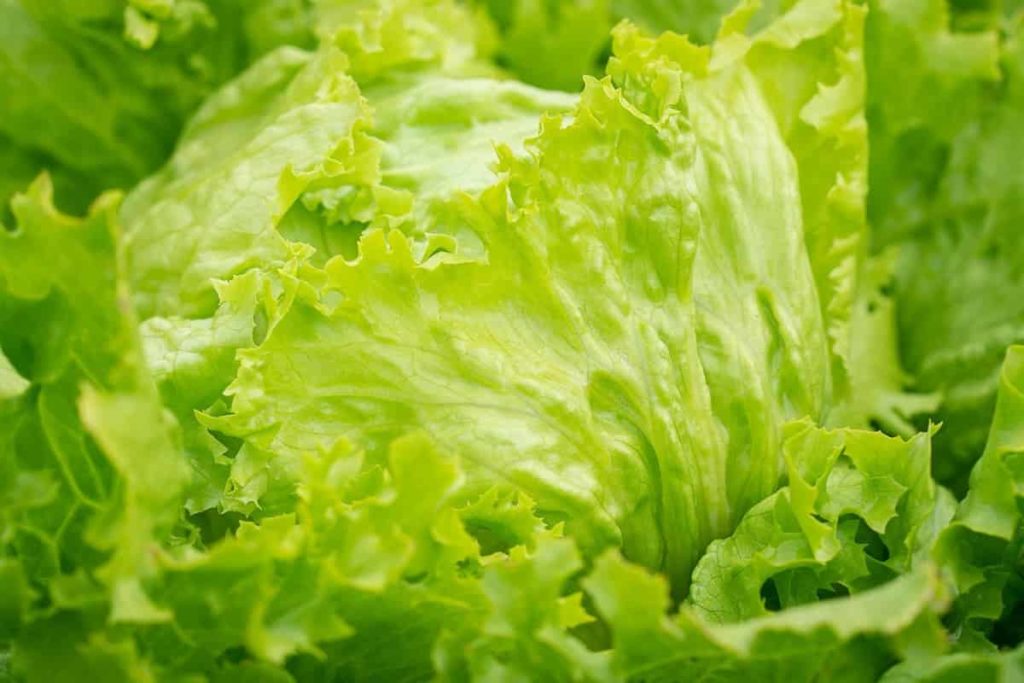
Rows are often covered to protect Lettuce plants from insect attacks. Nets can protect the Lettuce plant from various pests. Avoid excessive use of fertilizers in Lettuce plants. Crop rotation and weed control methods can be used against some diseases. Chemical control measures are permitted after consultation with a local licensed agronomist.
Step 17: Tips for reducing bolting in Lettuce
Lettuce does not like hot weather. The plant panics and decides to produce better seeds as soon as possible. Seed pods develop, and the plant begins to turn nutrients into seed production. This process, called bolting, produces bitter Lettuce. To reduce Lettuce bolting, look into bolt-resistant Lettuce cultivars first. For example, Slobolt can be grown in warmer temperatures. Other gardening tips include planting Lettuce in shady areas to prevent bolting in hot weather, using mulch to cool the soil, and providing a light mist of overhead irrigation to cool plants.
Step 18: Harvesting time for Lettuce plant growth
You don’t have to worry about harvesting Lettuce – it’s one of the easiest vegetables to harvest. Most Lettuce can be harvested between 30 and 70 days after planting. Timing is based on individual preference. Once your Lettuce has reached your desired size, it’s ready. Lettuce harvesting in the morning gives you the best flavor. Always harvest Lettuce early in the morning.
The leaves will be fresher and crispier during this time. But, before heading out to your garden with pruning tools, water the plants and wait 15-20 minutes. The best time for Lettuce leaves harvesting is when they grow 4-6 inches. You can also chop the young leaves, which adds great flavor to the salad. Learning how to harvest leaf Lettuce is easy. Butterhead, Romaine, and Head Lettuce are easily cut near ground level.
If you cut back every other Lettuce plant, you give the rest of the plant room to grow. If you keep the Lettuce leaves short, the plants will continue to produce new leaves well into the summer. Allowing the leaves to grow large and mature signals the plant to send out flower stalks and produce seeds, the point at which it will no longer be edible. Keep your leaf Lettuce small, even if it means discarding some leaves because there is more than you can eat.
Step 19: Yield of Lettuce per hectare
The average yield of Lettuce per hectare is 20-40 tonnes.
Conclusion
Lettuce is a healthy leafy vegetable grown primarily for its delicious green leaves with a mild flavor. These simple above steps will provide you with a bountiful supply of crisp salad greens throughout multiple seasons.
- Economical Aquaculture: A Guide to Low-Budget Fish Farming
- 15 Common Planting Errors That Can Doom Your Fruit Trees
- How to Make Houseplants Bushy: Effective Tips and Ideas
- Innovative Strategies for Boosting Coconut Pollination and Yield
- Pollination Strategies for Maximum Pumpkin Yield
- The Complete Guide to Chicken Fattening: Strategies for Maximum Growth
- Natural Solutions for Tulip Problems: 100% Effective Remedies for Leaf and Bulb-Related Issues
- Revolutionizing Citrus Preservation: Towards a Healthier, Greener Future
- Natural Solutions for Peony Leaf and Flower Problems: 100% Effective Remedies
- Maximizing Profits with Avocado Contract Farming in India: A Comprehensive Guide
- Natural Solutions for Hydrangea Problems: 100% Effective Remedies for Leaf and Flowers
- The Ultimate Guide to Choosing the Perfect Foliage Friend: Bringing Life Indoors
- From Sunlight to Sustainability: 15 Ways to Use Solar Technology in Agriculture
- The Ultimate Guide to Dong Tao Chicken: Exploring from History to Raising
- The Eco-Friendly Makeover: How to Convert Your Unused Swimming Pool into a Fish Pond
- Mastering the Art of Delaware Chicken Farming: Essentials for Healthy Backyard Flocks
- 20 Best Homemade Fertilizers for Money Plant: DIY Recipes and Application Methods
- How to Craft a Comprehensive Free-Range Chicken Farming Business Plan
- Brighten Your Flock: Raising Easter Egger Chickens for Beauty and Bounty
- How to Optimize Your Poultry Egg Farm Business Plan with These Strategies
- Subsidy for Spirulina Cultivation: How Indian Government Schemes Encouraging Spirulina Farmers
- Ultimate Guide to Raising Dominique Chickens: Breeding, Feeding, Egg-Production, and Care
- Mastering the Art of Raising Jersey Giant Chickens: Care, Feeding, and More
- Ultimate Guide to Raising Legbar Chickens: Breeding, Farming Practices, Diet, Egg-Production
- How to Raise Welsummer Chickens: A Comprehensive Guide for Beginners
- How to Protect Indoor Plants in Winter: A Comprehensive Guide
- Ultimate Guide to Grow Bag Gardening: Tips, Tricks, and Planting Ideas for Urban Gardeners
- Guide to Lotus Cultivation: How to Propagate, Plant, Grow, Care, Cost, and Profit
- Agriculture Drone Subsidy Scheme: Government Kisan Subsidy, License, and How to Apply Online
- Ultimate Guide to Raising Araucana Chickens: Breed Profile, Farming Economics, Diet, and Care
- Bringing Hydroponics to Classroom: Importance, Benefits of Learning for School Students
- Ultimate Guide to Raising Polish Chickens: Breed Profile, Farming Economics, Diet, and Care
- Ultimate Guide to Raising Australorp Chickens: Profile, Farming Economics, Egg Production, Diet, and Care
- Silkie Chicken Farming: Raising Practices, Varieties, Egg Production, Diet, and Care
- Sussex Chicken Farming: Raising Practices, Varieties, Egg Production, Diet and Care
- Homemade Feed Formulations for Livestock: Discover Cost-effective Starter to Finisher Feed Recipes